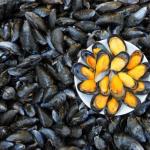An abstract of individual occupation sound l. Individual program of correction classes for the production, automation and differentiation of sound
Subject: "Sound statement [l].
Purpose:
Continue to learn correctly perform articulation gymnastics;
Consolidate knowledge about the mechanism of sound formation [l];
Show and explain the articulation of sound [l];
Teach correlate sound with the letter;
Develop phonematical perception, memory;
Educating the desire to improve their speech.
Equipment:
Material for creating an articulator readiness to cause sound [l]; Author - TA Tkachenko;
Didactic material for the formulation of sound [l] Authors - V.V.Konovalenko, S.V.Konovalenko;
Subject pictures from the "Logopedic lotto" author - A.S. Galanov;
Pictures from L.N. Zueva "Entertaining Exercises for Development of Speech";
Band, attacks, alcohol, cotton balls.
Travel course:
1. Static exercise "Window".
purpose : To teach the mouth wide open; activate the circular muscle of the mouth and the mobility of the upper lip; Teach to lower the root of the tongue and promote the language close to the teeth.
Exercise progress : smile, wide open mouth; Relaxed tongue to move close to the teeth, retain positions to the account up to 5.
2. Static exercise "Fence".
purpose : Develop the ability to hold the lips in a smile, exposing the lower and upper teeth.
Exercise Structure: the top and bottom teeth closed the lips in a smile, hold the lips in this position at the expense of up to 5.
3. Static exercise "needle".
purpose : Develop the ability to hold the tongue narrow.
Exercise Structure: to smile, open the mouth, expose the cutters, narrow, directly to push between the teeth, hold on to 5.
4. Static exercise "Sail".
purpose : learn to hold the tip of the tip of the upper teeth,
Exercise Structure: smile, open the mouth; The tip of the tongue with the power to rest in the upper teeth, hold in the specified position to 5.
5. Dynamic exercise"pendulum".
Purpose: develop language mobility.
Exercise Structure: smile, open the mouth, exposing his teeth; narrow language to cover between the cutters; Turn the language to the right and left to the corners of the lips.
6. Dynamic exercise"swing".
Purpose: make the ability to raise the language up; Develop the accuracy and activity of the tip of the tongue, the ability to quickly change the position of the language.
Exercise Structure: to smile, show your teeth, open your mouth, get a wide tongue to the bottom of the lip (stretch to the chin) at the expense of "times", at the expense of "two" to heat the tongue to the upper lip (reach out to the nose).
7. Dynamic exercise"Little swing."
Purpose: increase mobility, develop the accuracy and activity of the tip of the tongue.
Exercise Structure: smile, slightly open the mouth, put a wide front edge of the tongue to the bottom lip; Perform minor movements to the front edge of the tongue up-down.
8. Dynamic exercise"Delicious jam."
Purpose: develop the movement of the front of the tongue up.
Exercise Structure: slightly open the mouth, and the wide front edge of the language lick the upper lip, making the movement of the tongue from top to bottom (not from side to side).
9. Dynamic exercise"Clean your teeth."
Purpose: work out the ability to hold the tip of the language for lower teeth, activate the tip of the language.
Exercise Structure: smile, showteeth, open the mouth and the tip of the "Clean" languagebottom teeth, making the movement first from the storgeus aside, then from bottom to up.
II. . Conversation about the image of the sound [l]; position of articulation organs;
When pronunciation [l]. Wide open mouth. Make a narrow tense language. The tip of the language lift to the alveolum (for the upper cutters). Clearly, long to pronounce the sound [l. ] . Approach the palm to mouth, feel the movement of the air.
Characteristic of this sound.Consonant, ringing, solid
1. Repeat the following sounds for me.
Pronunciation of sounds of speech close to sound and sound articulation [l]
N, s, v, b, g, go, w, y, a, u, y
2. Raise the signal card if you hear the sound [l].
Exercise to highlightmy sound [l] in the stream of other sounds.
Exemplary sound row: Mr. -L --y---L-in -3-lp-M-L-X-N- -L -L-A-U-O-L-in -3-l- -m-l -X. -Not -b -
3. Picture with the image l ozki. and L. amp . If the picture is named correctly, slamming in your hands, incorrectly not.
the spoon
a number of pronounced words: a roast, burn, spoon, a spoon, spoon, a spoon, a rook, a spoon, spoon, spoon
lamp
a number of pronounced words: Vamp, Amp, Lamp, Camp, Sampa, BAMP, Lamp, Tampa, Lamp, dump, champa, lamp, bamp, ramp, champ, nampa
4 . Before you, six cards, choose a picture in the name of which there is sound [l].
Using a digital row, determine the sound of the sound [l] in the word. Put questions to the words of subjects and determine (live and inanimate).
III . Homework:
Perform an articulation gym in front of the mirror.
Exercises "OKOSHEKO", "The fence". Distribute positions to the account before 5. Hold these two
exercises.
"Needle". Hold positions to the account up to 5 .
"Delicious jam." Follow 10 times clockwise, counterclock 10 times.
"Sail". Hold the position to the account to 5.
"Snake". Fill 10 times.
Didactic material for lesson
1
2
3
4
5
6
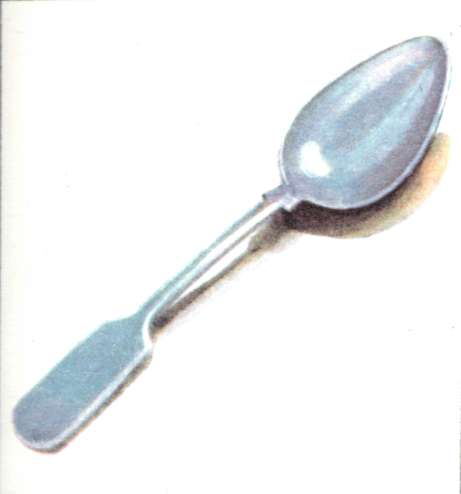

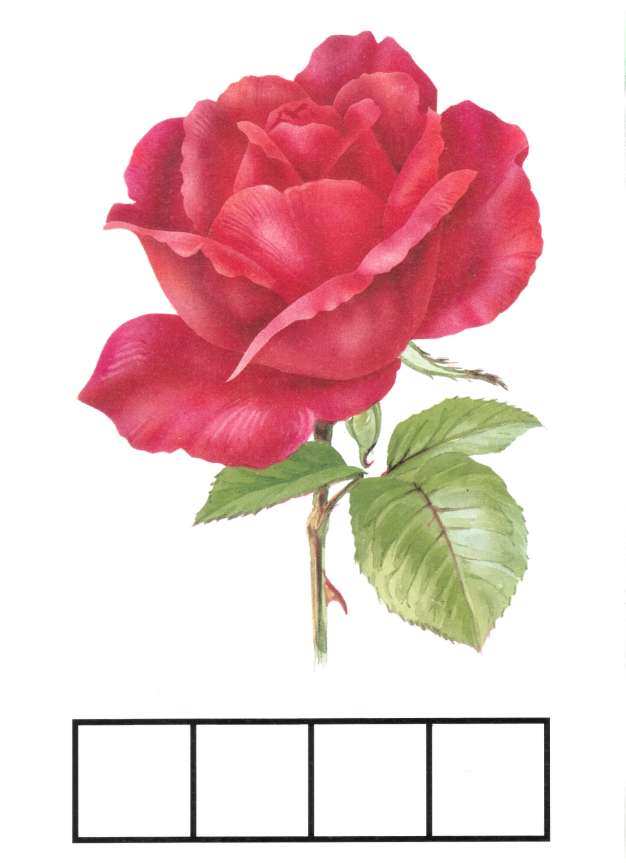


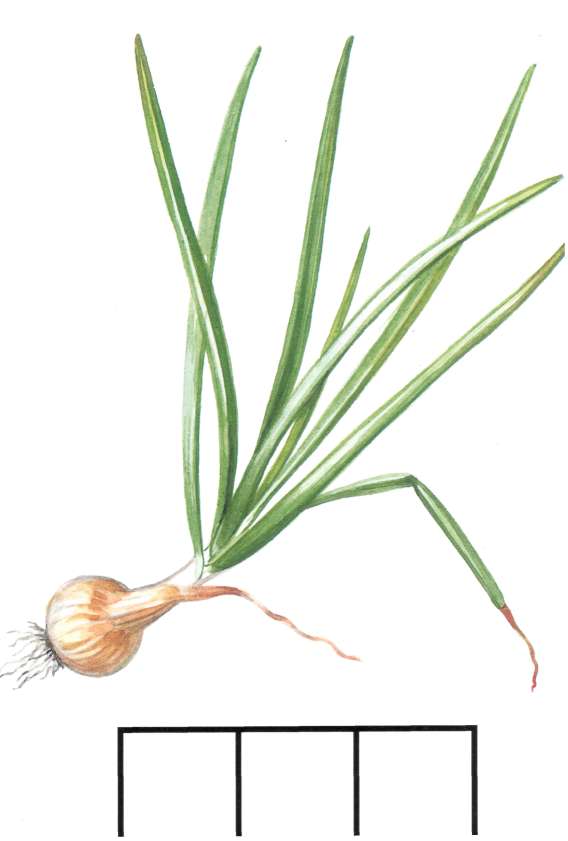
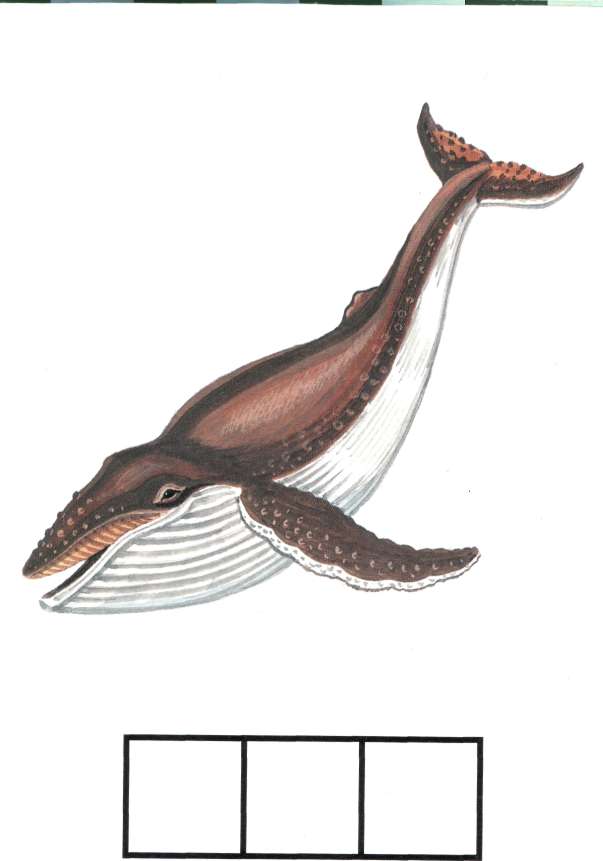

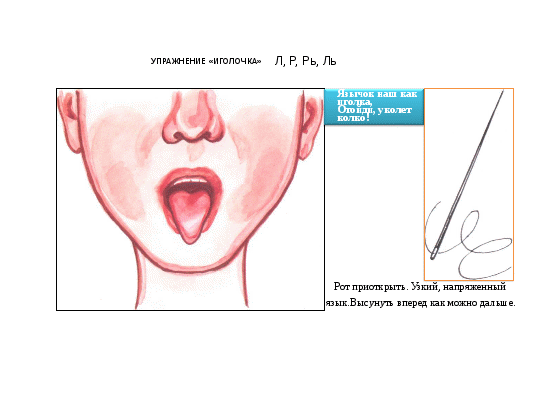

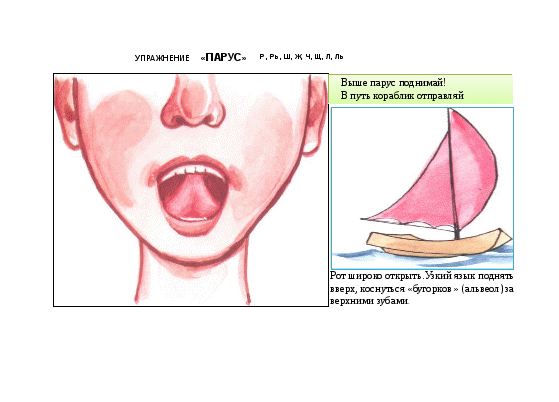
Up to No. 10 "Alma"
Speech therapist: Balmagambetova.g.
Abstract individual classes
"Sound automation [l]"
Purpose: Automate the sound [l] in syllables, words, phrases.
Correctional - Educational:
Develop the right articulation structure when pronunciation [l].
Exercising in a clear pronouncement of sound [l] in syllables, words,
Correctional - developing:
Develop phonmematic hearing
Develop a smooth exhalation
Develop auditory and visual attention
Develop a shallow motor.
Correctional - raising:
Educate the prishability, self-control.
Equipment: Cube with articulation gymnastics, water container, table tennis container, box, sticks, flower details (white and colored), flamingo, cage, lock, box in the form of a pit.
Travel course:
- Hello. Sit on the chair. Today we will go to the fairy tale. To get into it - close eyes (the speech therapist puts the castle on the table, a cage with a bird). Open the eyes and listen to the beginning of the fairy tales. Core was a beautiful bird. She did not pronounce the sound of L. and suggested to her that the wizard lives in the castle, who will help her say this sound. And the bird went to him. But it turned out to be an evil sorcerer. He sharpened her in a cage. Flamingo needs to be saved.
Message Topics Classes.
- Let's help? Let's save it from the sorcerer? We will learn to pronounce the sound of L. at the same time and teach the bird. But the road is not easy to the castle. The sorcerer put us traps and to get around them, you need to perform tasks. But I'm sure you can cope with them.
Main part.
Articulating gymnastics.
- On our way the first trap. A rock. You see that the stone is not simple. After performing all these tasks, we strip it from the way.
On each face of the cube picture corresponding to the articulation exercise:
Fence
Driver drives up
Well, ahead is a fence.
Slows down and back.
And so eight times in a row.
Open your mouth wider
Keep once, two, three, four.
If the language jumps,
"A-A-A" sing, and he lies!
Baked pancakes a little bit
Cooled on the window,
There are them with sour cream,
We will invite a mom to dinner.
I'll raise the tongue
And paint the ceiling,
Move back-back
Our tongue is very happy!
Well done, you coped well. I removed the stone.
Development of smooth exhalation.
- and reached the river. But the sorcerer broke the bridge, and now we cannot move to the shore. It's good that the boat remained.
(In front of the child a rectangular container with water, on the water of a colored tennis ball. The child blows on the ball).
Development phondeMectic hearing. "Catch the sound" game
- So we came to the next trap. This is a pit that sorcerer died so that different animals get there. Let us fall it with you. I will call you words now. Listen carefully. If the word is the sound of L, you throw a stone into the pit.
Varnish, poppy, table, stop, bark, wax, sofa, window, chalk, chair, house, paw.
You work remarkably. Now the beasts will definitely not fall into the trap.
Su-Jok therapy "Dwarfs"
Look, here's another obstacle. The evil sorcerer poured the passage on the road, let's cope with it.
There were gnomes
In the omnissal house.
Dad-Gnome Firewood Rubil,
Gnome-son, they wore them to the house,
Mama Gnomic Soup Cook,
Daughter-gnome Solished him,
Gnomic-grandmother knitted,
Gnomic-aunt washed,
Grandfather - the window opened
All familiar visual
The game "Colorless Flowers".
- We were on the gland, but see: Flowers are colorless. Apparently, here the sorcerer tried. But I know how we can add paints with flowers. To get a colored petal, you need to pronounce two syllables with the sound of L:
al-ol, ol-ul, ul-em, el-al, la-lo, Lo Lu, Lu-lies, Ly-la,
(The child repeats the syllables behind the speech therapist and changes the white petal on color).
Fizminutka.
- I think that we are a little tired of going around the sorcerer traps. Let's rest a little.
(The child repeats the words and movement for the speech therapist)
Carefully look at the screen and call those pictures where there is a "l" sound.
Pictures appear on the screen. The child answers.
White "color" game
The game "What Alla did"
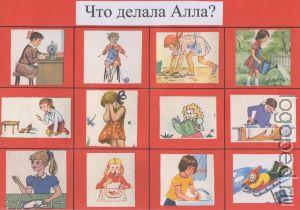
- Well, we came with you to the castle of the evil sorcerer. (Cell is removed, the elephant is in front of the lock). He watched for us all this time, looked like you deftly go around his traps, which was frightened and ran away.
Outcome.
- What are you well done. And in the traps did not hit, and the sorcerer was driven, and the bird freed. Did you like in class? And what task liked? And what was hard to perform?
Objectives:
Correctional educational:
- learning to perform articulation exercises for the sound "l" in full;
- teach children to give acoustic-articulating characteristic of sound;
- improve skills sound Analysis and synthesis.
Correctional educational:
- develop phonumatic processes;
- develop attention, memory, small motorcy;
- develop the power of voice and intonation expressiveness of speech.
Educational:
- to form a friendly relationship.
Equipment: Symbol of sound, pictures, in the name of which there is a "l" sound, sound line, cards on the definition of a sound place in the word, sound signals, SU-JOK Massager, toy Luntik, Mosaic.
Structure occupation
1. Organizational moment.
Recall our rule:
Every day, always, everywhere
In class, in the game
Loudly, clearly speak,
We never rush.
2. Ladon massageneedle Massager "Su-Jock".
I ride my walnut so that there was a circle of all.
3. Face massage.
- On the cheek circle together by time:
So forgetful targets Memory of the smoke.
Do not forget massage for cheeks you need to do everything. - On chin Circle Circle:
Mishutka I want to help
Clearly, quickly talk, sounds to utters.
1, 2, 3 - I will say 4, 5 and 6, and 7. - To think better mischievous bear
We will define Lobika plush flush
1, 2, 3 - I will say 4, 5 and 6, and 7.
Do not forget the massage such a need to do everything.
Motivation.
Children find a letter. "I hurry to visit: Unitka."
Speech therapist. I know that you can't utter the sound "l". We will help the Luntik and get together with him.
4. Development of articulation motility.
Articulation of sound "L".
Tongue at the top, the tip pressed to the tubercles (alveolum);
On the sides of the language, the gap is formed, into which air passes;
Lips open, teeth too.
b) give the characteristic of the sound "l"
Consonant, solid, ringing.
c) Sound symbol: a big plane buzzes: L-Ll.
d) articulation gymnastics.
Showing pictures-exercises, children perform at the expense.
The tongue lay down on the bottom of the lip, what is his beautiful, relaxed ("pancake").
The tongue really wants to listen to an interesting story and he looks out of impatience, it hides the teeth again ("delicious jam").
Run runs, looking for a place more comfortable ("turkey").
I saw a steamer in the distance and signed a song ("Steamer buzzing").
(Children rest in the top teeth and buzz as a steamer).
5. Formation of the diaphragm breathing "watch".
Sitting on a chair, legs to dilute on the width of the shoulders, her arms omit. Take the left hand to the side and put on the back: slowly leaning right, it is easy to pat right hand on the left side - inhale. Return to starting position - full exhalation (stomach draw, relax). The same else.
Tick-so, tick-like
There are a watch like this:
Slope to the left, the slope is right,
Tilt to the left, the slope is right.
6. Development of phonderatic hearing.
Sit down if you hear the sound "l".
M, P, L, K, L, La, Pa, Lou, we, Lo, Ol, Paw, Pipe, Piaila, Elk.
Skiomplexes:
loudly auioye, quiet auyi whispering iouows.
8. Riddles.
Children guess the riddles and raise pictures. Then they define the sound of the sound in the word using the cards.
Iron sister
Zubasta and Ortre
Her and maple is afraid
And poplar and pine:
And even the oak is afraid
Get under the saddle sister (saw).
When he did not come everywhere
Your long sharp nose
Our garden has long been brought,
And the forest was a goal and Bos (woodpecker).
Two smoky girlfriends
Do not fall behind each other.
Both in the snow run
Both songs sing (skis).
I do not eat, but I feed people (spoon).
Little growth I, thin and acute.
I'm looking for a nose to myself, for my tail Thai (needle).
9. Sound analysis.
Children lay out the schemes of words using sound symbols: table, moon.
10. Development small Motoriki.
Stay out of mosaic letter L.
11. Outcome classes.
Luntik thanks children and gives a picture with his image.
Individual speech therapy lesson "L" sound. "
Subject: Sound [L].
Stage: Stopping the sound [l].
Objectives:
1. Correction and educational:
formation proponunciation sound [l];
clarification of acoustic and pronunciation of sound [l];
consolidation of ideas about the mechanism of sound organization [L].
2. Correctional and developing:
development of shallow motility (lacing);
performing articulation exercises in full (articulation gymnastics);
the development of smooth long exhalation (exercise "soap bubble");
development of phondermatatic ideas (game "Floating Top");
fastening the sound in an isolated form, in syllables, words;
3. Correction-educational:
upbringing cooperation and interaction skills;
formation of a positive attitude towards classes.
Equipment: picture depicting clown, lacing, pictures with articulation exercises, soap bubbles, articulation scheme, mirror.
Travel course:
Stages of classes
1. Organizational moment
"- Hello! Please listen to the riddle:
Loves everyone to mix the crank
He gets to see
Many different jokes knows
In the circus often stands. "
2. Topics message
"- right, it's a clown and today he came to visit us to make our lesson cheerful. Today we will continue to work with the sound [l]. We will try to pronounce it right and beautiful. "
3. Development of shallow motility by means of lacing
"- Not a friend happened to our clown. He was in a hurry to visit us that he did not notice how the button was broken away. Let's help our clown to seus it. "
4. Articulating gymnastics
"- let's imagine that our mouth is a circus. And now we will show that there is in our circus: a clown who smiles to everyone - let's make a smile - well done. Elephants appear in the circus - let's make a trunk. We still have a buffet, where they give a delicious jam - let's lick the sponge. After jam, you need to clean the teeth. Still in the circus there are gymnasts, they perform on a swing - let's show the swing. Different animals are in the circus, let's show the performance with the snake. "
5. Development of long and smooth exhalation
"- Look, clown brought a magic box with you, let's see what lies in it? That's right, these are soap bubbles. Do you like to inflate soap bubbles? Let's try. Only there is one condition: inhale we make a nose, exhalation of mouth and watch the cheeks do not infiltrate. "
6. Sound statement
Used by reception:
From the saved sound: "Now let's remember how we buzzed on the past occupation - the lips are stretched, with a long pronouncement of sound [a], push the tip of the tongue between the upper and lower cutters, hold it in this position."
(I fix the attention of the child in the position of lips and language).
7. Using an isolated sound
"You probably know that clowns are often toured. And what do you think, what are they going on the journey? That's right on the aircraft. Let's remember how the plane bursts when he takes off. " (The speech therapist shows a picture of the aircraft and imitates it takes off).
"And when he flies high in the sky - how will we buzz? Correctly - quiet. Well done!"
8. Analysis of articulation
"Now I suggest to see the scheme on which the desired position of the articulation organs is depicted. Tell me when we pronounce the sound [l] in what position are the lips? (Open). And where is the tongue? (tongue between front teeth). Motor works or not? (works)".
9. Development of phonderatic hearing (Slap-Top game)
"It seems to me, will it be time for us? Now I will pronounce various words, you will clap in your hands when you hear words with the sound [l], if there is no word in the word sound - you are holding your feet. For example: in the word "Elephant" - is there a sound [l]? So what are we doing? And in the word ball? ".
machine, shelf, wardrobe, shovel, chair, mouse, saw, cat, chalk, ribbon, teddy bear.
10. Fixing sound in syllables
"Repeat after me:
la Laala; LE - Le - Le; lions; Lo - Lo, La - Lo - Le "
11. Fixing sound in words
"Look, our clown sent an envelope. I wonder what lies there. Let's watch? Yes, it is a mystery. To unravel it, you need to call all items and think what a picture is superfluous and why. "
12. Homework
1. Repeat the articulation gymnastics
2. Remember five animals, in the title of which there is sound [l]
3. Coloring riddles.
13. Total
"Tell me, what sounds did we work on today? Who comes to visit us? What did you like most? What task was difficult for you?
14. Evaluation
"You practiced very well, diligently performed all the tasks. Well done!"
References:
1. Individual forms speech therapy work/ Avt.-Cost. AD Kulikovskaya, S.V. Semenova -Yakutsk: from the Institute of Merzlotov Studies from the Russian Academy of Sciences, 2010 - 122 p.
2. Konovalenko V.V., Konovalenko S.V. Automation of sonorous sounds L, Album 3.
The proposed abstract can be used in a subgroup or individual work.
In the absence of a special wooden lacing in the form of a button, you can use a conventional plastic buttice of large diameter and lace.
For the riddles used exercise "Fourth Excess", subject pictures can be selected based on lexical theme. For example, for the lexical theme "Clothing" you can choose the following pictures: dress, coat, trousers, blouse. The child calls all the pictures and finds an extra subject (trousers), then he must explain why this subject is extra (no sound L).
I wish you success!
Filippova Yu.A., teacher-speech therapist MBDOU CRP - D / s № 86 "Bell" Yakutsk.
Subject: Sound [L].
Stage: Stopping the sound [l].
1. Correction and educational:
- the formation of the correct pronunciation of sound [l];
- clarification of acoustic and pronunciation of sound [l];
- consolidation of ideas about the mechanism of sound organization [L].
2. Correctional and developing:
- development of shallow motility (lacing);
- performing articulation exercises in full (articulation gymnastics);
- the development of smooth long exhalation (exercise "soap bubble");
- development of phondermatatic ideas (game "Floating Top");
- fastening the sound in an isolated form, in syllables, words;
- development of the power of voice and intonational expressiveness of speech (game imitation).
3. Correctional educational:
- upbringing cooperation and interaction skills;
- formation of a positive attitude towards classes.
Equipment: picture depicting clown, lacing, pictures with articulation exercises, soap bubbles, articulation scheme, mirror.
Travel course:
|
Stages of classes |
|
|
1. Organizational moment |
"- Hello! Please listen to the riddle: Loves everyone to mix the crank He gets to see Many different jokes knows In the circus often stands. " |
|
2. Topics message |
"- right, it's a clown and today he came to visit us to make our lesson cheerful. Today we will continue to work with the sound [l]. We will try to pronounce it right and beautiful. " |
|
3. Development of shallow motility by means of lacing |
"- Not a friend happened to our clown. He was in a hurry to visit us that he did not notice how the button was broken away. Let's help our clown to seus it. " |
|
4. Articulating gymnastics |
"- let's imagine that our mouth is a circus. And now we will show that there is in our circus: a clown who smiles to everyone - let's make a smile - well done. Elephants appear in the circus - let's make a trunk. We still have a buffet, where they give a delicious jam - let's lick the sponge. After jam, you need to clean the teeth. Still in the circus there are gymnasts, they perform on a swing - let's show the swing. Different animals are in the circus, let's show the performance with the snake. " |
|
5. Development of long and smooth exhalation |
"- Look, clown brought a magic box with you, let's see what lies in it? That's right, these are soap bubbles. Do you like to inflate soap bubbles? Let's try. Only there is one condition: inhale we make a nose, exhalation of mouth and watch the cheeks do not infiltrate. " |
|
6. Sound statement |
Used by reception: From the saved sound: "Now let's remember how we buzzed on the past occupation - the lips are stretched, with a long pronouncement of sound [a], push the tip of the tongue between the upper and lower cutters, hold it in this position." (I fix the attention of the child in the position of lips and language). |
|
7. Using an isolated sound |
"You probably know that clowns are often toured. And what do you think, what are they going on the journey? That's right on the aircraft. Let's remember how the plane bursts when he takes off. " (The speech therapist shows a picture of the aircraft and imitates it takes off). "And when he flies high in the sky - how will we buzz? Correctly - quiet. Well done!" |
|
8. Analysis of articulation |
"Now I suggest to see the scheme on which the desired position of the articulation organs is depicted. Tell me when we pronounce the sound [l] in what position are the lips? (Open). And where is the tongue? (tongue between front teeth). Motor works or not? (works)". |
|
9. Development of phonderatic hearing (Slap-Top game) |
"It seems to me, will it be time for us? Now I will pronounce various words, you will clap in your hands when you hear words with the sound [l], if there is no word in the word sound - you are holding your feet. For example: in the word "Elephant" - is there a sound [l]? So what are we doing? And in the word ball? ". machine, shelf, wardrobe, shovel, chair, mouse, saw, cat, chalk, ribbon, teddy bear. |
|
10. Fixing sound in syllables |
"Repeat after me: la Laala; LE - Le - Le; lions; Lo - Lo, La - Lo - Le " |
|
11. Fixing sound in words |
"Look, our clown sent an envelope. I wonder what lies there. Let's watch? Yes, it is a mystery. To unravel it, you need to call all items and think what a picture is superfluous and why. " |
|
12. Homework |
1. Repeat the articulation gymnastics 2. Remember five animals, in the title of which there is sound [l] 3. Coloring riddles. |
|
"Tell me, what sounds did we work on today? Who comes to visit us? What did you like most? What task was difficult for you? |
|
|
14. Evaluation |
"You practiced very well, diligently performed all the tasks. Well done!" |
References:
1. Individual forms of speech therapy work / Avto-Sost. AD Kulikovskaya, S.V. Semenova -Yakutsk: from the Institute of Merzlotov Studies from the Russian Academy of Sciences, 2010 - 122 p.
2. Konovalenko V.V., Konovalenko S.V. Automation of sonorous sounds L, Album 3.
The proposed abstract can be used in a subgroup or individual work.
In the absence of a special wooden lacing in the form of a button, you can use a conventional plastic buttice of large diameter and lace.
For the riddle, the exercise "Fourth extra" is used, subject pictures can be selected based on the lexical theme. For example, for the lexical theme "Clothing" you can choose the following pictures: dress, coat, trousers, blouse. The child calls all the pictures and finds an extra subject (trousers), then he must explain why this subject is extra (no sound L).


